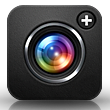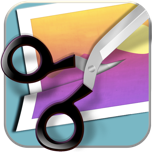This month as part of my year long photo a day project I decided to shoot my pictures for this project with my iPhone 4 and while I had planned to post daily and talk about the things I’ve learned using the iPhone 4 for my camera it’s been busy. So today’s post will cover the first 13 days of my project and some of the programs I’ve used along the way that I think some of you may be interested in.

11.02.10 Kenny Embry with the Hopkins County Schools maintenance department works against the late morning sun Tuesday at Hopkins County Central High School to change out one of the lights in the parking lot at Mortons Gap. Photo shot with the native iPhone 4 Camera App and processed in Photoshop CS5. - Photo by Jim Pearson
After the first 13 days I’m finding that for most of my shooting the camera I’ve been happiest with is the one that is built into the iPhone 4. It gives the full resolution of the camera and a unedited jpg from the phone is a little over 14mb when opened in Photoshop. This is a much larger and better quality file than I used to get when I first started using 35mm digital cameras back in the beginning when I was using a modified Nikon/Kodak joint venture that had a tethered hard drive that was slung over your shoulder (a whopping 20mb in size) to store images on.
While I love the crisp screen on the iPhone 3, I do find that when shooting in extreme situations where there’s bright light, like outdoors during the daylight, that it can be difficult to see the image on the screen because of the reflections on the glass screen. I’ve learned to deal with it and have considered putting a screen protector of some sort on it, but don’t want to give up the nice clear look that I love when working with it. I’ll have to look around and see if hoodman or someone has come up with some sort of a hood that you can use on the phone when shooting with it.
As with most digital cameras one thing that the iPhone 4 doesn’t like is shooting directly into the sun, so for the most part I’ve found it’s best to position the sun behind my subject or somewhere in the frame where it’s shielded as with my second picture of the month of Kenny Embry changing out a light at Hopkins County Central.
I started out the month doing most of my work with this camera and then opening the picture up on my desktop and editing it using Adobe Photoshop CS5. You could use just about any program to do your editing with, but I’ve been using Photoshop since version 1 back in the 1980’s and it’s the one I am comfortable with.
What I do with a picture once I get it into Photoshop varies from photo to photo. If I’m working on a picture for the newspaper I usually stick to what could be done in a traditional photographic darkroom, except a bit easier with the computer. Dodging, burning, removing dust or spots that always find their way to my sensor and of course sharping. Otherwise, it all depends on what I feel is in the picture that I want to convey.
I’ve used several other iPhone Apps this month that I’ll highlight and provide links to here that have been some of my favorites so far.
Camera+ is an iPhone App that I’ve used a lot for post processing of pictures after they’ve been shot with the built in iPhone 4 Camera. While I’ve not done much shooting with it I have used it to processing some of my photos on the iPhone and really like some of the filters and other effects that it allows you to do on this little hand held device. So much power in such a small box. It sells for $1.99 on iTunes.
A great website that reviews apps like this is http://www.iphoneography.com and here’s what they have to say on this app. “Camera Plus (App Store Link) takes full advantage of your iPhone’s accelerometer to help you take pictures that are blur-free and straight, by continuously monitoring your phone’s position, Camera Plus is capable of taking pictures quickly and efficiently, without any added delays.
Camera Plus is also aware of your device’s orientation, automatically rotating pictures to account for whether you are taking a picture in landscape or portrait mode.”
Another of my favorite apps that I’ve been using for awhile is called Photogene. (App Store Link) It also has a full set of features which I’ve used for post processing of some of the photos I’ve been shooting. This app has been referred to as “the iPhone’s Photoshop.”
I find that this so far has been on of my favorite apps as I’ve been using it for several months, even before I got my iPhone 4. It’s easy and fast to use and does a good job of adjusting just about everything when it comes to picture processing on the iPhone. It sells for $2.99 on iTunes.
iPhone Photography’s website has a great video on the app here…
I’ve also been using a plug-in for Photoshop called Topaz Adjust which has a really nice set of preset filters that you can apply to your photographs. Many of them are things you could accomplish yourself manually in Photoshop, but they’ve put them together into a interface that makes life simplier. While many of the filters have presets, all of them can also be adjusted to suit your tastes which is a great feature. The set runs $49.00 on their website, which is a great investment for what they do.
There are some hefty requirements to use this set of plugins however which are:
Windows
- Requires Windows XP, Windows Vista, or Windows 7
(32-bit and 64-bit) - Requires at least 1GB RAM, preferably more.
- Compatible with Adobe Photoshop 7-CS5 (32-bit and 64-bit), Adobe Photoshop Elements 1-9, or another editor that supports Photoshop plug-ins. These include Irfanview, PaintShop Pro, etc.
- Compatible with Lightroom with free download Trial.
Mac
- Requires Intel-based Mac OSX 10.4-10.6.
PowerPC processors like G4 or G5 are not supported. - Requires at least 1GB RAM, preferably more.
- Compatible with Adobe Photoshop CS3 – CS5 (32-bit and 64-bit), Adobe Photoshop Elements 6-9.
- Compatible with Apple Aperture 2 and 3, Adobe Lightroom 2 and 3 for Mac, and iPhoto with free download Trial.




